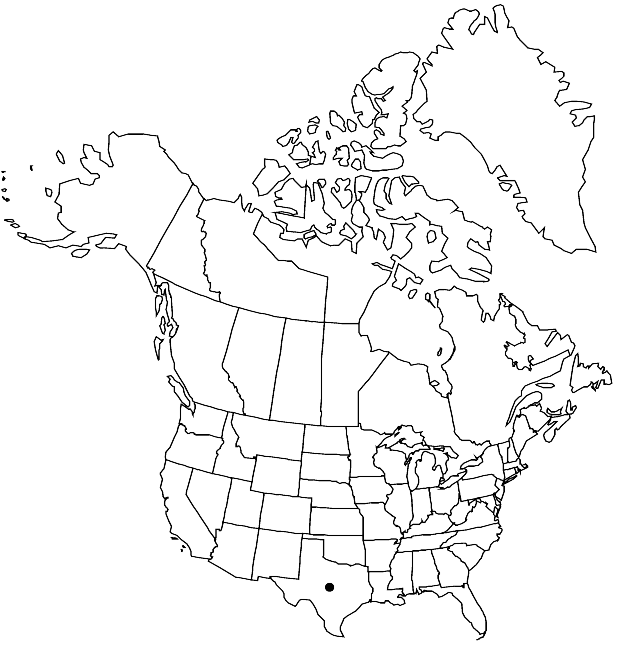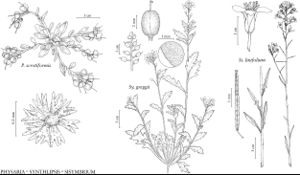Synthlipsis greggii
Mem. Amer. Acad. Arts, n. s. 4: 116. 1849.
Stems few to several, (1–) 2–6 (–7.5) dm, densely pubescent. Basal leaves: petiole (0.7–) 1.5–5 (–7) cm; blade obovate to spatulate or broadly oblong, (1–) 2–8 (–10) cm × (5–) 10–40 (–60) mm, base cuneate to truncate, apex acute to subobtuse, surfaces densely pubescent. Cauline leaves shortly petiolate or (distalmost) sessile; blade similar to basal, 1–5.5 (–6.5) cm × 5–25 (–40) mm (smaller distally). Racemes 0.5–4 cm. Fruiting pedicels usually straight or upcurved, rarely slightly sigmoid, (4–) 5–15 (–20) mm. Flowers: sepals (4–) 5–8 × 1.5–2 mm; petals (7–) 8–11 (–13) × (5–) 6–9 mm, claw to 2 mm; filaments 4–6 mm; anthers 2.5–4 mm, (base strongly sagittate). Fruits (0.7–) 0.8–1.2 (–1.5) cm × 5–8 (–9) mm, apex deeply notched; valves densely pubescent; style 2–5 mm. Seeds 1.5–2 × 1.2–1.7 mm. 2n = 20.
Phenology: Flowering Oct–May.
Habitat: Creosote bush-mesquite scrubland, grasslands, gravelly hillsides, rocky sandstone or limestone slopes, rocky flats, limestone rubble, gypsum of llano, calcareous gravel, sandy or loamy areas
Elevation: 50-2400 m
Distribution

Tex., Mexico (Chihuahua), Mexico (Coahuila), Mexico (Durango), Mexico (Hidalgo), Mexico (Nuevo León), Mexico (San Luis Potosí), Mexico (Tamaulipas), Mexico (Zacatecas)
Discussion
Synthlipsis greggii is known from Brewster, Hidalgo, and Zapata counties.
Selected References
None.
Lower Taxa
"elongated" is not a number."thick" is not a number."dm" is not declared as a valid unit of measurement for this property."dm" is not declared as a valid unit of measurement for this property.
